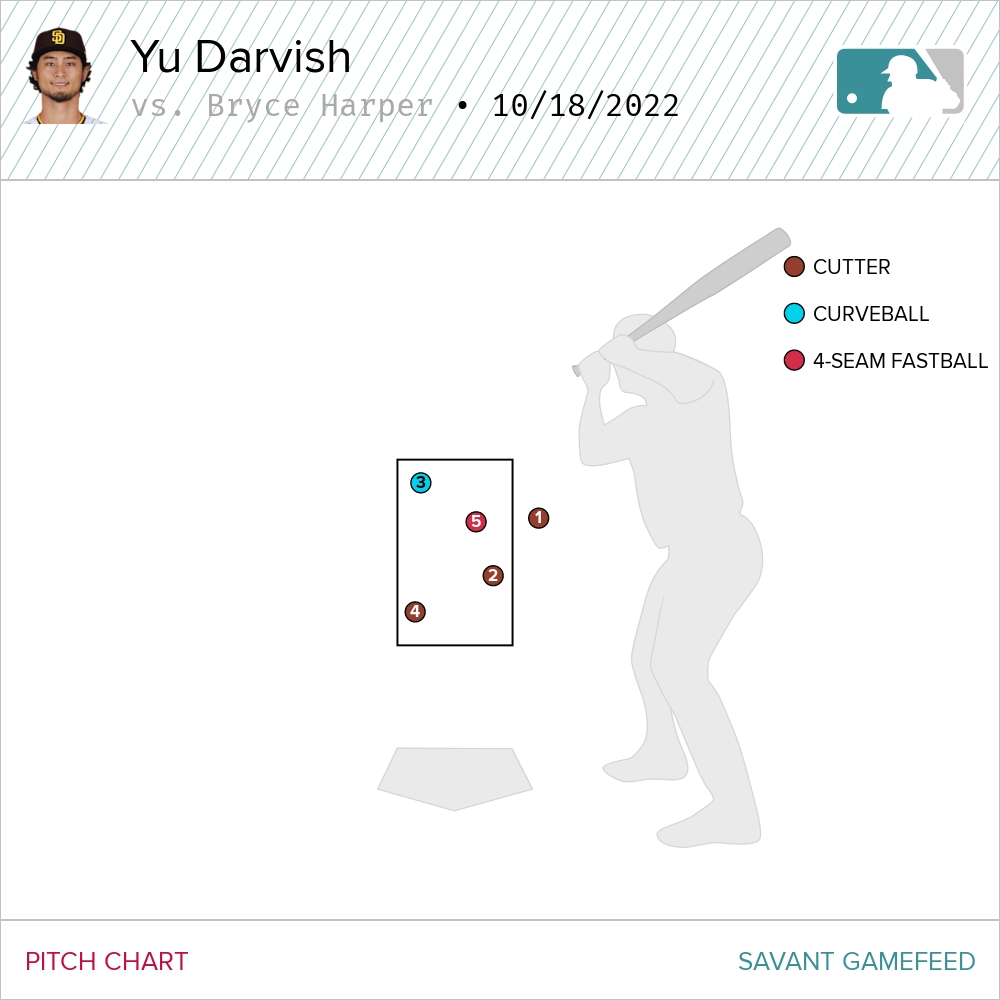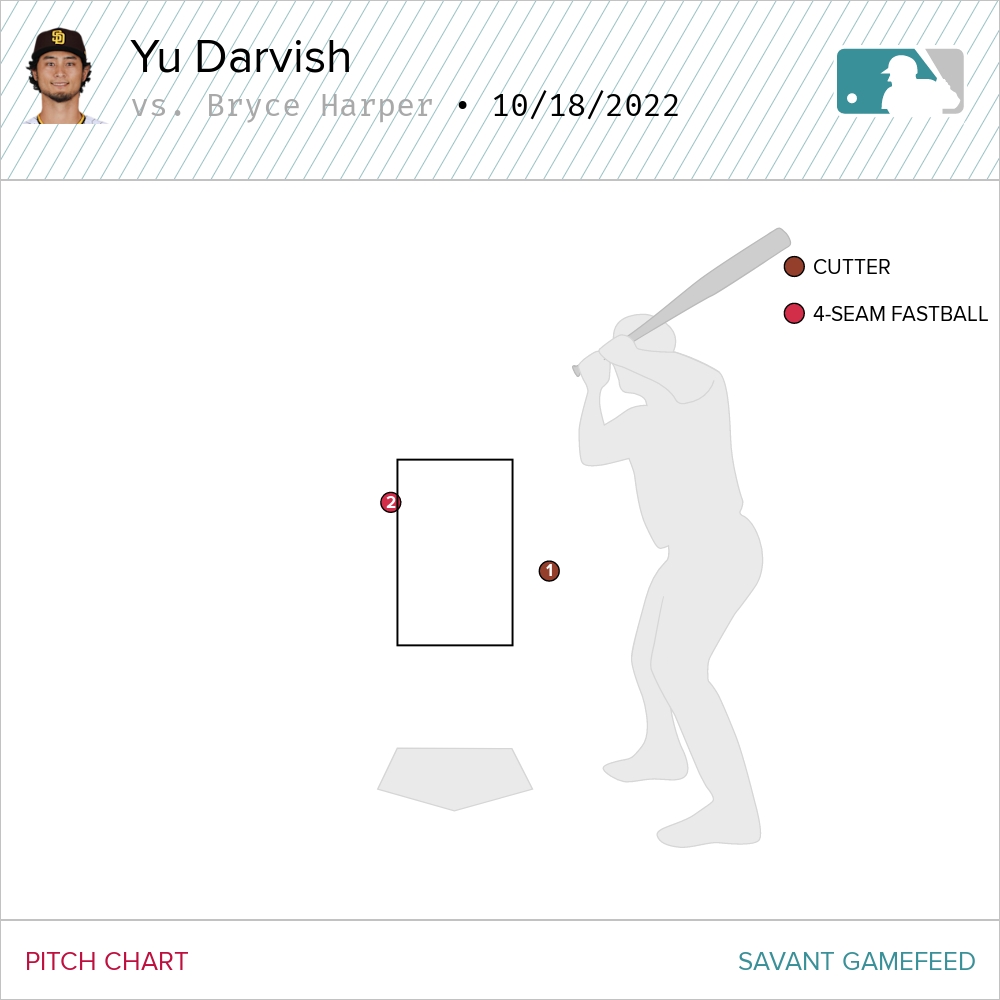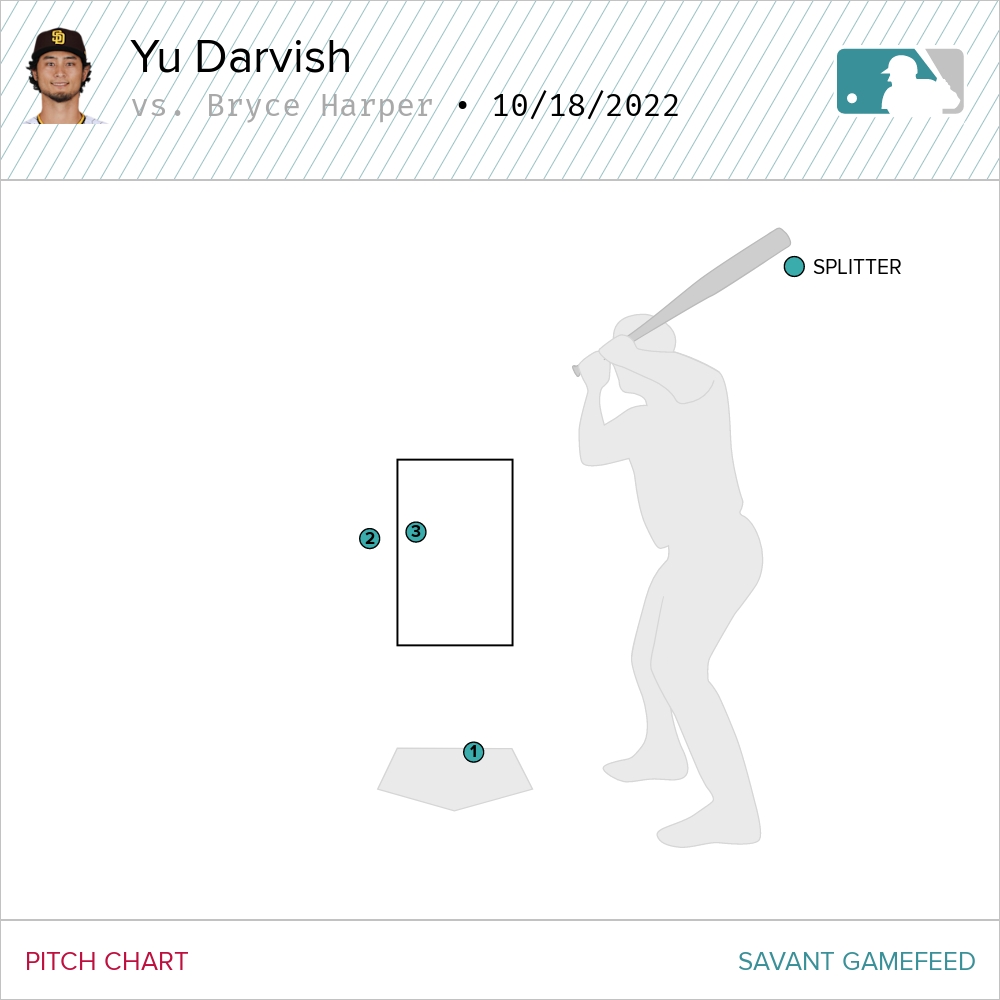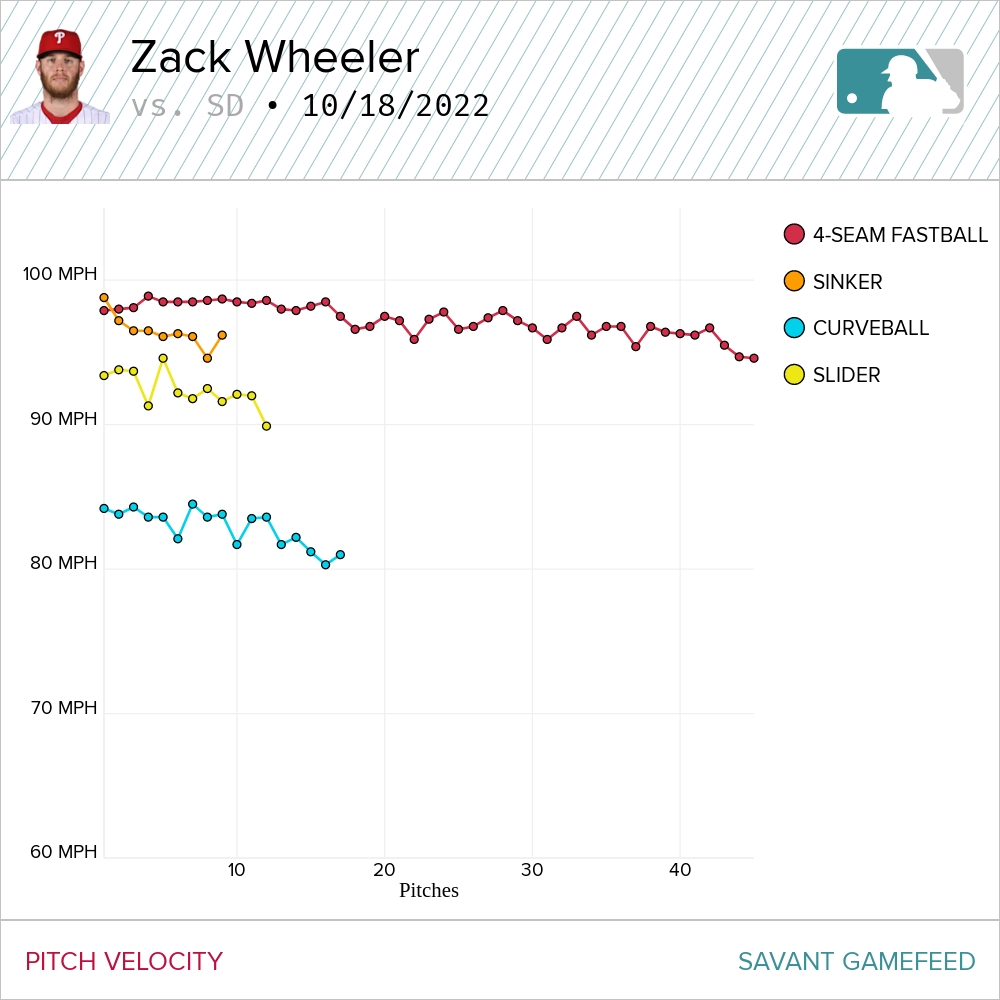In a Rapid-Fire Pitcher’s Duel, Zack Wheeler and the Phillies Came Out on Top

Well folks, that’s what we call a pitcher’s duel. I don’t think there’s a universal definition for the term, but Wikipedia tells me it’s when both starting pitchers allow very few runners to reach base. That seems about right! Zack Wheeler and Yu Darvish both came up big Tuesday night in San Diego, with each starter limiting the success of the opposing team’s hitters after each offense had put up an incredible performance in their respective Division Series. As the game progressed, both attacked their foes with a variety of pitches spread across the zone. Neither was predictable, and neither gave their manager much reason to remove them, but one made a few more mistakes in a few more at-bats than the other. Those mistakes ended up being the difference in the game.
To understand exactly what happened in those at-bats — specifically, why the batter was successful — it helps to know what happened with each pitch and what the pitcher-catcher tandem’s potential thought process was for each of them. John Smoltz always sprinkles in tidbits about pitch sequencing that are worth listening to when he broadcasts a game. It’s easier said than done, but a pitcher holding back some pieces of their repertoire until later in the game — or say, a hitter’s third at-bat — is a good way to maximize deception. If there’s anyone who knows a thing or two about that, it’s Darvish. Darvish’s never-ending pitch mix allows him to change how he attacks hitters as the game progresses. In his first battle against Bryce Harper, he opted for a three-pitch mix and attacked Harper in the zone. No nibbling the first time around:

This at-bat resulted in a barrel for Harper. He scorched it at 106 mph off the bat, and it appeared to be heading into right field for an RBI single, but Jake Cronenworth had something to say about that. The Padres second baseman made a dazzling, run-saving play to start off the night:
From Harper’s perspective, this at-bat had to be considered a win despite the result — there really wasn’t much else he could do but tip his cap. He put a great swing on a pitch in a two-strike count, and it took an incredible play to hold him off. Heading into the next at-bat, he kept his approach the same and hunted Darvish’s four-seam fastball. With Darvish cruising through the lineup and no runners on, though, the pitcher had to have been confident in his game plan. He started the Phillies slugger off with a cutter just slightly inside:

This is a quality 0-0 pitch. After Harper’s swing in his first at-bat, it made sense for Darvish to try to catch him being too aggressive and jam him with an inside cutter. That’s good pitch calling. He might have gone down 1-0, but at least the approach was sound. For the next pitch, Darvish opted for a four-seamer on the outside edge. As you can see above, it was well located! Sadly for him, Harper did this to it:
Oooof. It’s a great pitch but a better swing. That’s what hitters like Harper can do to pitchers. It may not have been a no-doubter, but he got just enough of it for it to travel into the first row in left field. With a 42 degree launch angle, it’s the highest home run hit by Harper all year. Interestingly enough, only four other batted balls hit at that launch angle with an exit velocity between 104 and 105 mph resulted in home runs in this season, and Harper’s was the only to the opposite field. Sometimes it takes a unicorn home run to beat pitchers when they execute like Darvish did last night. Speaking to Ken Rosenthal in the dugout after the home run, Harper said his approach against Darvish would be to stay on the heater. Maybe he said that a little too loudly:

Three of the eight splitters Darvish threw last night came in this at-bat against Harper. He made hard contact (101 mph off the bat), but he was too far out in front and the ball’s top spin caused it to die and fall right to Juan Soto. To me, this is what playoff baseball is about. How will the hitter and pitcher adjust to one another as the game goes on? After giving up the home run, Darvish had to make a change, and it worked well enough to get an out. Sadly for him, just a few batters before the triple splitters, Kyle Schwarber did this:
Uh, wow. Schwarber’s home run had an exit velocity of 120 mph and traveled 488 feet. Talk about a laser show. There really wasn’t much to this at-bat beyond a missed cutter that Schwarber was very rude to. Good hitters make mistakes hurt, and this one hurt my ears and probably Darvish’s feelings in the process.
Those two runs were enough for the Phils because as I said earlier, one pitcher made a few more mistakes than the other. Yes, Wheeler threw some pitches in the zone, but his fastball was electric for most of the night. He spread his pitches around the zone depending on who was at the plate, and he never gave up the big hit. You may have been a little surprised that he was removed after only 79 pitches. Allow me to show you his velocity by inning:

It was the right move, and Wheeler knew it, as he indicated in his postgame interview. No need to take the chance when you have Seranthony Domínguez and José Alvarado pitching as well as they have been, especially when they boast triple-digit fastballs.
Wheeler, who had dominated the first two times through the lineup while leaning on his fastball and slider, broke out his curveball while making his third trip through. That tactic was similar to that of Darvish and speaks to Smoltz’s point about mixing in a new weapon as the game develops. Wheeler’s curveball is a classic top-down breaker used to yield called strikes and keep hitters off his fastball. On seven swings against the pitch, Wheeler got three whiffs. But even better, the pitch was good for five called strikes. As you look to attack a fastball, the shape of the curve is just enough to temporarily buckle your knees and make you think twice about swinging. It proved very effective for him, as his fastball lost a bit of life with each inning that went by.
To be fair, even though Wheeler’s velocity trended down as the game went on, it was still about a tick and a half above his season average on all four of his pitches. He sat at about 97 mph all game and moved his fastball around the zone with pure artistry. He had a game plan against each hitter that he perfectly executed. Most notably, he didn’t leave a single pitch in the heart of the zone against Soto the three times they faced off. Knowing Soto isn’t one to be very aggressive, Wheeler worked around the edges and did not give in once. That resulted in a four-pitch walk, a strikeout looking in a 3-2 count, and a strikeout swinging later in the game. It was great execution by Wheeler in one of the game’s most important matchups.
I’d like to personally thank last night’s pitchers for the pace at which they dominated. The official time of game was logged at two hours and 48 minutes. What a treat for those of us looking to enjoy playoff baseball that doesn’t enter the depths of the night. Because of their great pitching, Philadelphia has secured a 1-0 lead in the National League Championship Series. With Aaron Nola set to toe the rubber against Blake Snell in Game 2, the Phillies have to be feeling pretty confident.
Esteban is a contributing writer at FanGraphs. One of his main hobbies is taking dry hacks every time he sees a bat.

three cheers for jose alvarado. i would have never believed you if you told me in june he’d be saving a 2-0 game in the NLCS. what a transformation. props to the philly pitching staff.